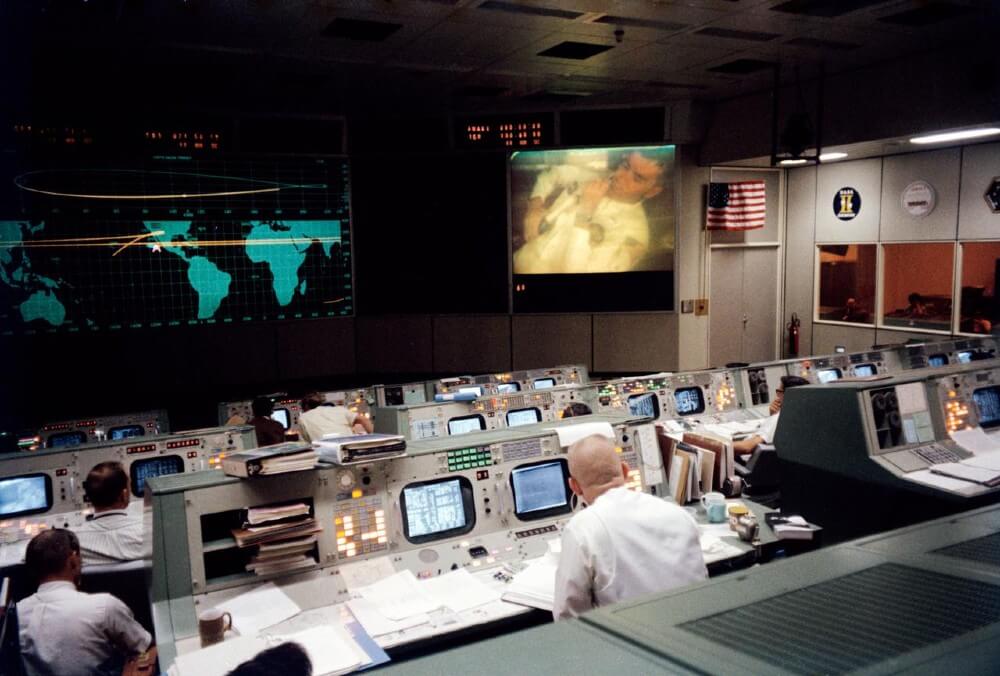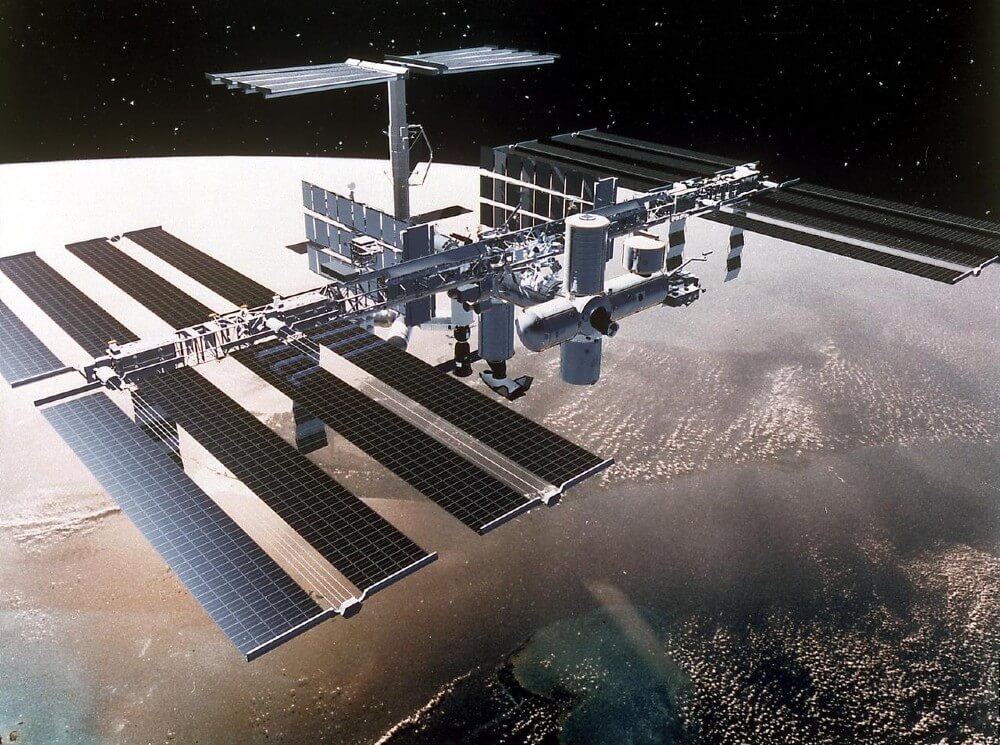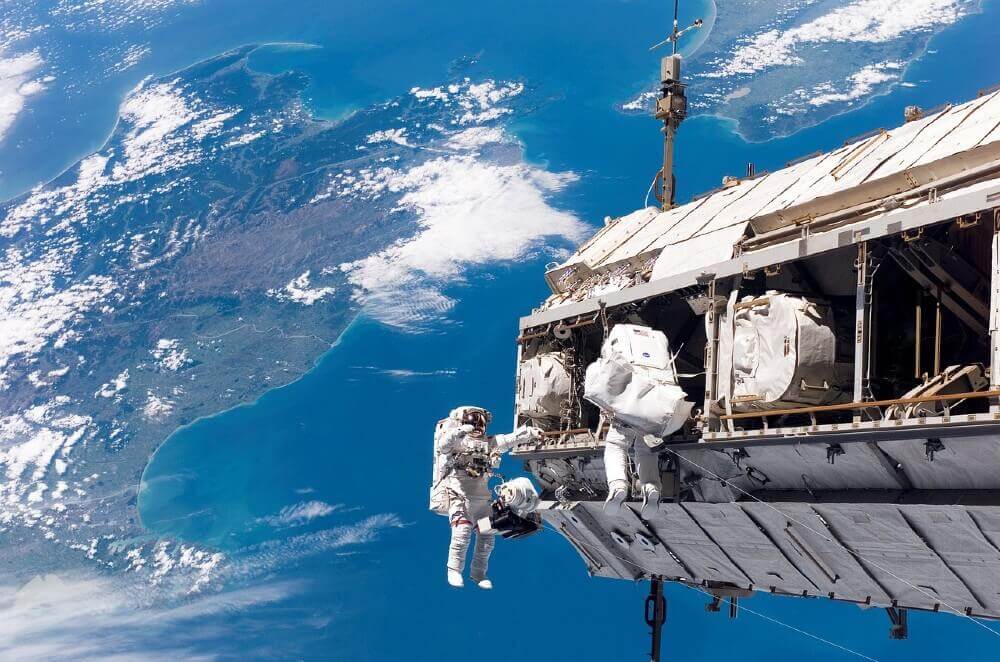Astronauts communicate with Earth while in space by using a variety of methods. One common way is to use radio waves, which can be sent and received by satellites. This is the primary way that astronauts talk to Mission Control back on Earth. However, sometimes they need to talk privately, and for this, they use a special device called an intercom. This allows them to talk directly to one another without having to broadcast their conversation to the whole world. Finally, astronauts also use social media to communicate with people on Earth. For example, they might post photos or updates on Twitter or Instagram. This allows people to follow their adventures and feel like they are a part of the mission.

What Type Of Equipment Is Used To Communicate With Astronauts?
Astronauts rely on specialized equipment to communicate with people on Earth. This equipment allows them to talk, send messages, and even operate the spacecraft from their remote location in space. Let’s take a closer look at the types of equipment that are used to communicate with astronauts!
Radio Waves
Radio waves are one of the most common ways that astronauts communicate with Earth while in space. They use radio waves to send and receive messages from satellites, which is the primary way that they talk to Mission Control. Radio waves are a form of electromagnetic radiation, which means that they can travel through the air and be received by devices like radios or cell phones. This makes them a great way to communicate over long distances, and it’s why they are commonly used for communication between spacecraft and ground stations.
Intercom
An intercom is a special device that allows astronauts to talk directly to one another without having to broadcast their conversation to the whole world. It’s a great way for them to communicate privately, and it can be used on space missions when astronauts need to coordinate with one another. Intercoms use radio waves to transmit sound, and they can be handheld or mounted on a wall.
Social Media
Astronauts also use social media to communicate with people on Earth. For example, they might post photos or updates on Twitter or Instagram. This allows people to follow their adventures and feel like they are a part of the mission. Social media is a great way for astronauts to connect with people all over the world and share their experiences in space.
How Long Does It Take For A Message To Reach An Astronaut?
When you want to get in touch with someone on Earth, all you have to do is pick up the phone or shoot them an email. But what if you want to contact an astronaut who is orbiting the planet at 17,500 miles per hour? It turns out that there are several ways to send a message to space, but it can take a while for the message to reach its destination.

One way to send a message to an astronaut is to use the Amateur Radio on the International Space Station (ARISS) program. This program allows amateur radio operators to contact astronauts on the ISS and chat with them for a few minutes at a time. However, because of the high demand for this program, it can take months or even years to get approved for a contact.
What Are Some Of The Challenges Associated With Communicating With Astronauts?
One of the most challenging aspects of astronaut communication is the time delay that is inherent in space travel. Even with the use of light-speed technology, there is still a significant lag between when a message is sent and when it is received. This can make real-time conversation impossible and can also lead to misunderstandings. Additionally, astronauts must contend with limited bandwidth, which can make sending and receiving large amounts of data difficult.
Another challenge is that astronauts must be able to communicate across language barriers. In an international space mission, it is likely that astronauts will come from different countries and speak different languages. This can make communication difficult, especially in emergency situations.
Finally, communication with astronauts must be designed to account for the fact that they are operating in a high-stress environment. Messages must be clear and concise and should avoid any unnecessary distractions.
How Has Communication With Astronauts Changed Over Time?
Communication with astronauts has changed dramatically over time. In the early days of space exploration, astronauts were mostly isolated from the ground crew and the general public. They relied on radio transmissions to communicate with mission control. Today, astronauts have a much more direct connection with the people on Earth. They can use social media to stay in touch with their friends and families, and they can even video chat with mission control in real-time. In addition, modern spacecraft are equipped with sophisticated communications systems that allow for two-way conversations. As a result, astronauts now have a much more direct and personal connection to the people they left behind on Earth.
What Are Some Of The Benefits Of Communication With Astronauts?
Every day, we are learning more and more about the importance of communication. Whether it be with friends, family, or co-workers, clear and effective communication is key to a successful relationship. So, what happens when communication is taken to space? Recently, a few astronauts have answered some questions posed by students from Hamilton Elementary School in Huntsville, Alabama as part of the Amateur Radio on the International Space Station (ARISS) program.
The benefits of communicating with astronauts are vast. As these kids learned, not only does speaking with an astronaut inspire future generations to pursue careers in science and math, but it also provides opportunities for unique educational experiences that cannot be found anywhere else.
Astronauts also have to communicate with Mission Control on a regular basis. This communication is essential for the success of the mission. It allows the astronauts to stay in touch with ground control and receive updates on the status of the mission. It also allows ground control to keep track of the astronauts and make sure they are safe. In addition, communication with astronauts helps to ensure that everyone is on the same page and that the mission is going as planned. Communication is an essential part of space travel, and it is one of the things that makes space missions possible.
Conclusion
Astronauts have a variety of ways to communicate with people on Earth, but there are some challenges associated with this type of communication. The most significant challenge is the time delay that is inherent in space travel. Additionally, astronauts must contend with limited bandwidth, which can make sending and receiving large amounts of data difficult. Another challenge is that astronauts must be able to communicate across language barriers. In an international space mission, it is likely that astronauts will come from different countries and speak different languages. This can make communication difficult, especially in emergency situations. Finally, communication with astronauts must be designed to account for the fact that they are operating in a high-stress environment. Messages must be clear and concise and should avoid any unnecessary distractions.
Despite these challenges, communication with astronauts has come a long way over time. In the early days of space exploration, astronauts were mostly isolated from the ground crew and the general public. Today, they have a much more direct connection with the people on Earth. They can use social media to stay in touch with their friends and families, and they can even video chat with mission control in real-time. As a result, astronauts now have a much more direct and personal connection to the people they left behind on Earth.

